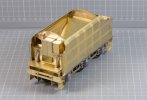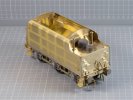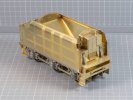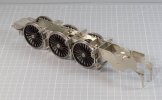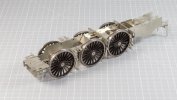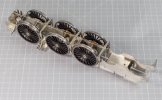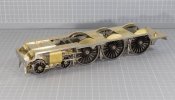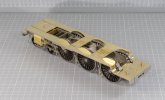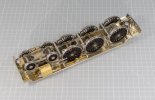Mick,
As you're doing replacement springs, are you working from the etches or works drawings ? Don't forget to allow for compression of the loco sitting on them

Ian
Well now, there's a point worth expanding on.
First off drawings will be the source information, I have very little faith in anything on this DA, or any DA kit, being 100% accurate. That's not a hidden criticism but an observation from building the kits; possibly because when the kits were drawn out the information wasn't available at the time (NRM library).
Second, depicting weighted engines on springs, some points to consider.
If you hadn't have mentioned it, would anyone know the difference.
You have mentioned it and I don't bother, would anyone notice the difference.
If I do add it, do I now to go back and alter all the tender axles boxes/springs to suit whatever coal load I put in, typically most kit tender springs are near empty.
If I do add them, should I then replace the kits passing nod to the J hanger profile to suit the more accurate springs with weight compensation.
If I make new J hangers should I then upgrade all the brake hangers, pivots and shoes.
If I make new brake gear should I then make all new accurate frame spacers.
If I make all new frame spacers should I now make new plate frames to the correct profile.
Where do you stop

On a green field site you can tailor everything to match, the DA kits are brown field sites and you're always going to be dragged back by the lowest denominator, therefore is there any real point adding bits that are 100% accurate when the rest of the model is barely 80% accurate?
For the record the springs will be weight compensated, simply because it takes no extra effort at all to draw the curved lines at a shallower radius. I have no idea what that radius will be, the drawings show an empty engine and I have no clue how much Royal Scot driving wheels deflect when fully loaded. In short I'm going to 'best guess' which then begs the question, if I don't know does anyone else and will they be able to tell the difference



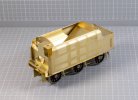
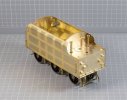
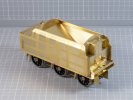
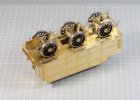


 , twice as thick as you really need to be honest.
, twice as thick as you really need to be honest.

